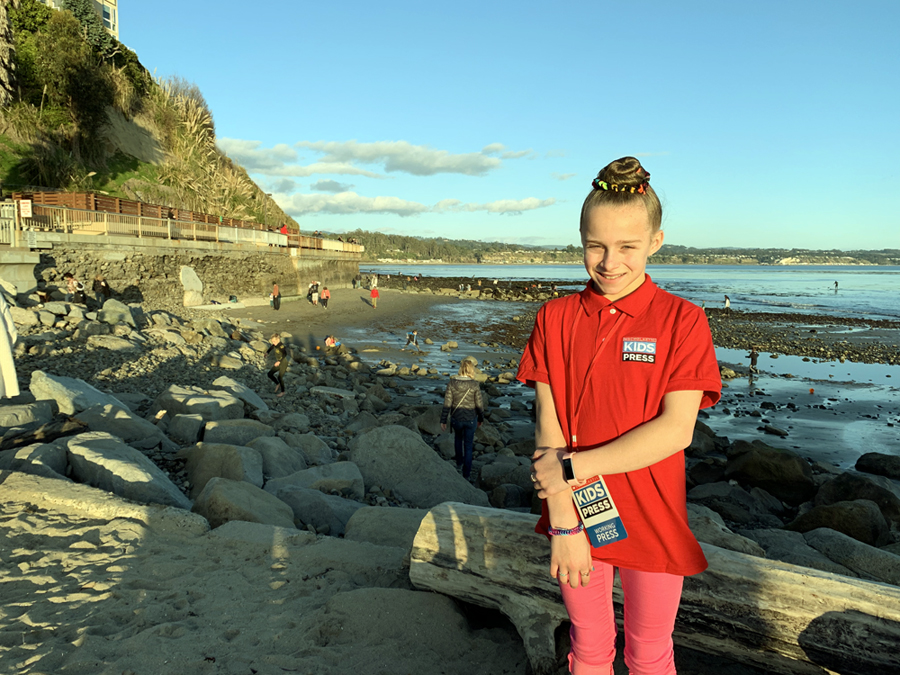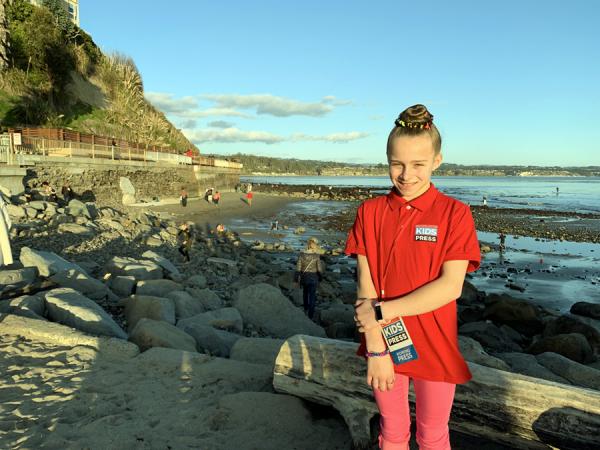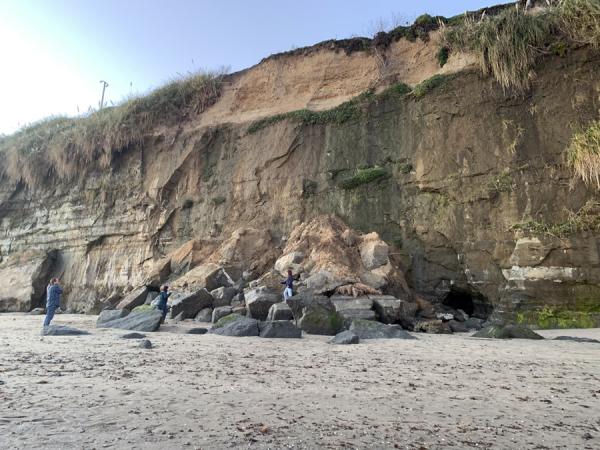KID REPORTERS’ NOTEBOOK
Californians Watch King Tides Roll In


Ella visits South Capitola Beach in Northern California during an extremely low tide.
Two to four times a year, “king tides” arrive along the California coast. These unusually high tides occur when the sun, moon, and Earth are in perfect alignment. This creates a strong gravitational pull on Earth’s oceans.
Both the sun and moon affect the tides, but the moon’s pull is about twice as strong as the sun’s. When the moon is closest to the Earth on its monthly orbit, and in alignment with the sun and Earth, it exerts a greater gravitational pull on the Earth’s oceans. This alignment creates extremely high and low tides.
High tides send waves crashing into sea walls and cliffs. When the tides drain out, rarely-seen tide pools are exposed at the bottom of the sea. These tides gives researchers, tourists, and residents a glimpse of what the high and low tides will look like in the future.

Waves crashes against the seawall in Northern California on January 11.
“LOOKING FOR CRITTERS”
On January 11 at 9:54 a.m., the highest of the king tides rose to 6.4 feet in Northern California’s Monterey Bay. South Capitola Beach was fully covered, with waves splashing up against the sea wall and cliffs. In less than eight hours, at 5:25 p.m., the ocean water was fully drained to a negative 1.4 feet. People were able to walk more than 80 yards out, to where they typically would be immersed in water.
Hundreds of people walked along the beach to observe this special occurrence. Some people waded through the tide pools looking at the exposed mussels, crabs, and sea anemones. Others stood back to take photos of the unusually low tide.
One visitor waved a metal detector, hoping to find jewelry, coins, and other treasures that had been lost in the waves. He found a ring at last year’s king tide that had a name on it, he said. He was able to return it to the owner.
Jeremy and Tessa Henry from Aptos, California, carried a net and bucket containing a few shrimp and small fish that they had found in the tide pools.
“We’re looking for critters under these rocks and seaweed that you don’t see any other day,” Tessa said.
“We brought our headlamps down here, so we can check things out after dark,” Jeremy added. “A whole new environment starts up.”
Jeremy described his experiences when he lived in Southern California. “We used to go out at night, and you would see sharks and stingrays come up and start feeding on the other animals close to the beach,” he said. “It was fantastic.”

Visitors explore a recent rockslide along the beach.
WHAT THE FUTURE HOLDS
Most visitors were eager to see the low tides at the beach. But researchers and scientists are paying the closest attention to the high tides. In the coming decades, scientists say, California will be greatly affected by the rise in sea levels caused by climate change. Understanding how king tides affect coastal areas will help scientists better understand what the future might look like.
As temperatures increase around the world, ice glaciers are melting in Antarctica and Greenland. And in some areas, rainfall is getting heavier. All of these things are causing sea levels to rise.
“This increase in sea level along the California coast could be greater than nine feet by the end of the century,” said Lisa Sudek, a research technician at Monterey Bay Aquarium Research Institute. “We’re already experiencing coastal erosion due to increasing sea levels, which will only become worse in the coming years.”
Climate change is also posing a threat to marine life. “Climate change is affecting the temperature, pH (chemistry), and nutrients of the oceans,” Sudek said. “All these factors affect the bottom of the food chain, which, in the long run, affects all of life in the oceans. The rising temperatures can directly affect the life cycle and behavior of marine mammals.”
When asked how kids can help slow climate change, Sudek had several suggestions. “Bike and walk more,” she said. “Reduce air travel, plant a tree, grow your own food if you can, or encourage your parents to buy locally and seasonally. Preserve energy, switch to solar power, and eat less meat.”
